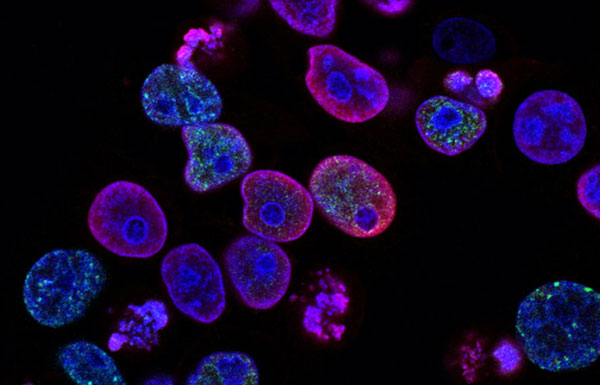Embracing the Future: The Transformative Power of Digital Pathology for Medical Labs

Introduction
The integration of digital pathology in medical labs represents a significant leap in healthcare technology advancements. With its ability to enhance diagnostic accuracy and streamline laboratory operations, digital pathology is not just a trend but a necessity for modern medical laboratories aiming to stay at the forefront of healthcare services.
What is Digital Pathology?
Digital pathology transforms traditional pathological analysis by digitizing glass slides, enabling pathologists to view, manage, and analyze these images digitally. This innovative approach surpasses conventional microscopy, offering clearer, more detailed, and easily shareable images, facilitating more accurate and efficient diagnoses.
The Importance of Digital Pathology for Labs
Adopting digital pathology is crucial for labs to maintain competitiveness and efficiency in today’s healthcare landscape. It offers enhanced diagnostic precision, faster result turnaround, and enables seamless collaboration, making it an invaluable asset for modern medical laboratories.
Making Business Sense: Why Labs Should Adopt Digital Pathology
Implementing digital pathology is a smart business decision. It streamlines workflow, increases case volume handling without proportional cost increases, and elevates your lab’s status as a technologically advanced facility. Moreover, it opens up new revenue streams and service offerings, making it a profitable investment.
Understanding Billing and CPT Codes for Digital Pathology
Proper billing is critical in realizing the full financial benefits of digital pathology. Labs must use specific CPT codes when billing for digital pathology services. These codes, updated for 2024, include a range of procedures from cytopathology to immunofluorescence:
|
Code |
Description |
Used With |
Notes |
|
+0827T |
Cytopathology, fluids, interpretation |
88104 |
|
|
+0828T |
Cytopathology, fluids, simple filter |
88106 |
|
|
+0829T |
Cytopathology, concentration technique |
88108 |
|
|
+0830T |
Cytopathology, selective-cellular enhancement |
88112 |
|
|
+0831T |
Cytopathology, cervical/vaginal, physician interpretation |
88141 |
Do not use with automated screening |
|
+0832T |
Cytopathology, smears, other sources, screening/interpretation |
88160 |
|
|
+0833T |
Cytopathology, smears, other sources, preparation/screening/interpretation |
88161 |
|
|
+0834T |
Cytopathology, smears, other sources, extended study |
88162 |
|
|
+0835T |
Fine needle aspirate, immediate cytohistologic study (first evaluation) |
88172 |
Do not use with 0837T |
|
+0836T |
Fine needle aspirate, immediate cytohistologic study (additional evaluation) |
88177 |
Do not use with 0837T |
|
+0837T |
Fine needle aspirate, interpretation/report |
88173 |
|
|
+0838T |
Consultation, referred slides |
88321 |
Do not use with digitized slides |
|
+0839T |
Consultation, referred material requiring preparation |
88323 |
Do not use with digitized slides |
|
+0840T |
Consultation, comprehensive |
88325 |
Do not use with digitized slides |
|
+0841T |
Surgical pathology consultation, first tissue block |
88331 |
|
|
+0842T |
Surgical pathology consultation, additional tissue block |
88332 |
|
|
+0843T |
Surgical pathology consultation, cytology (initial site) |
88333 |
|
|
+0844T |
Surgical pathology consultation, cytology (additional site) |
88334 |
|
|
+0845T |
Immunofluorescence, initial single antibody stain |
88346 |
|
|
+0846T |
Immunofluorescence, each additional single antibody stain |
88350 |
|
|
+0847T |
Retrieval of archival tissue for molecular analysis |
88363 |
Do not use with previously digitized slides |
|
+0848T |
In situ hybridization (FISH), single probe stain |
88365 |
|
|
+0849T |
In situ hybridization (FISH), each additional single probe stain |
88364 |
|
|
+0850T |
In situ hybridization (FISH), multiplex probe stain |
88366 |
|
|
+0851T |
Morphometric analysis, in situ hybridization, single probe stain (manual) |
88368 |
|
|
+0852T |
Morphometric analysis, in situ hybridization, each additional single probe stain (manual) |
88369 |
|
|
+0853T |
Morphometric analysis, in situ hybridization, multiplex probe stain (manual) |
88377 |
|
|
+0854T |
Blood smear, interpretation/report |
85060 |
Do not use with automated analysis |
|
+0855T |
Bone marrow, smear interpretation |
85097 |
|
|
+0856T |
Electron microscopy, diagnostic |
88348 |
|
Please note that these are add-on codes and should be reported in addition to the primary procedure code.
Benefits of Digital Pathology
Digital pathology offers numerous benefits:
- Enhanced Diagnostic Accuracy: High-resolution images and advanced analysis tools lead to more precise diagnoses.
- Efficiency and Productivity: Accelerated analysis and streamlined workflows increase lab productivity.
- Remote Collaboration: Facilitates consultations and second opinions, regardless of location.
- Improved Data Management: Simplifies storage, retrieval, and management of digital slides and patient data.
Business Impact of Digital Pathology
The transition to digital pathology can significantly impact business growth. Labs will experience increased work volume and improved service quality, enhancing their market position. Additionally, the data generated can be leveraged for research, development, and forming new business partnerships.
Conclusion
Digital pathology is a strategic step towards future-proofing laboratory services. By embracing this technology, labs can improve their diagnostic services, operate more efficiently, and open new avenues for business growth. Understanding and utilizing the appropriate CPT codes for digital pathology ensures that labs can maximize their return on this investment, making it not only a technological leap but a sound business strategy.
